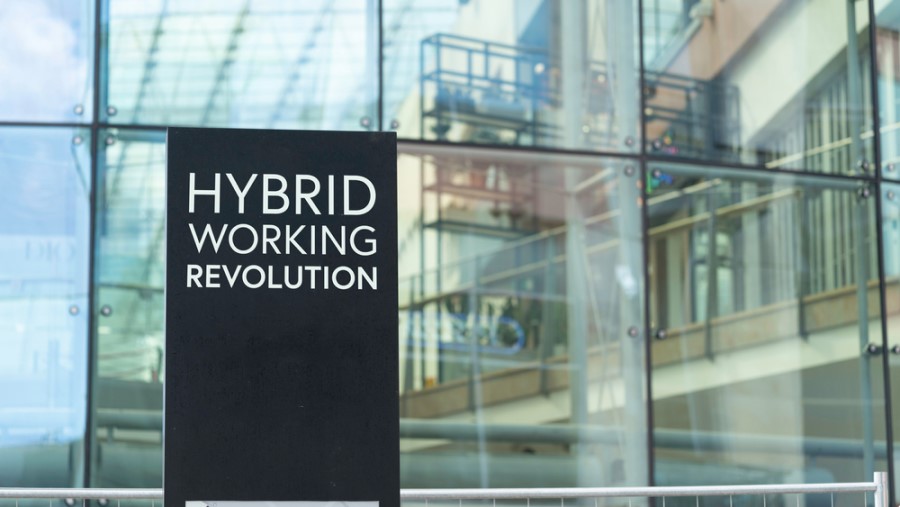10 ways to implement ‘Healthy Hybrid’ into work as we enter another ‘new normal’

Vitality’s new report, in partnership with the RSA, Healthy Hybrid: A Blueprint for Business, reveals that employees increasingly want to work in a way that can better support their wellbeing, offering flexibility, work-life balance and the ability to lead a fit and healthy lifestyle. Ultimately what this means is that businesses must embrace this ‘demand for different’.
More than eight in 10 said they would prefer to work at home for either part of the week or in full – just under half (48%) want a hybrid approach to working, while 38% would opt for permanent working from home.
The same number (80%) said they are looking for a better work-life balance, while seven in 10 (71%) want work to allow for a fit and healthy lifestyle. However, even though only a small percentage now want to work in the same physical location full time, more than a third think their employers will make them return to their workplace when lockdown rules allow – suggesting an expectation gap exists between employee and employer.
10 ways to ‘Healthy Hybrid’
As well as exploring the lessons learnt from the pandemic in relation to areas such as productivity, sedentary behaviour and mental health, the report lays out 10 recommendations to employers to help build and embed ‘Healthy Hybrid’ ways of working. Here they are:
1. Close the expectation gap
The report highlights the gap between employer and employee expectations – and their ‘demand for different’ – can be closed with mandates that are integrated into Company Risk Registers and prioritised at board level. Action must come from the top down. Adding to this, reporting on health and wellbeing outcomes should be integrated into the frameworks executive boards use to hold CEOs to account for their performance.
2. Senior leaders must normalise ‘Healthy Hybrid’ behaviours
As leadership expert Margie Warrel argued in Forbes, “there is no more powerful way to demonstrate the priority you put on mental health and wellbeing than how you take care of yourself”. Senior leaders in particular must lead from the front by practising what they preach when it comes to wellbeing and normalising ‘Healthy Hybrid’ behaviour, according to the report.
3. Create ‘Healthy Hybrid’ feedback loops
According to senior leaders interviewed for the report, clear communication and shared safe spaces to discuss emerging issues have been a key part of their crisis management strategy, for both wellbeing and productivity purposes. Employee voice and representation can help provide employees with a shared space of their own to express concerns about management and unhealthy hybrid behaviour.
4. Promote inclusive productivity gains
Enhanced flexibility that allows for homeworking is clearly important for wellbeing and diversity and inclusion too, however it will take time for organisations to get it right. While there is no one-size-fits-all approach, it appears that a clear and quick win for senior leaders would be to draw up policies in collaboration with their teams, with clear guidelines that apply to all members of the team and therefore establish social norms.
5. Mandatory breaks and ‘right to disconnect’ policies are needed
Moves towards flexibility over time must be accompanied by greater protections against an unhealthy approach to work and productivity that can leave hybrid and homeworkers at a greater risk of burnout, warns the report. Research from Microsoft shows that positive behaviour changes, such a taking breaks – even for five minutes – can make a big difference. Therefore, five-minute breaks between meetings should be mandatory for all employees, particularly those working in home or hybrid settings, the report recommends.
6. Health and wellbeing policies must be inclusive
The key to a ‘Healthy Hybrid’ approach is to make sure employee benefit packages are inclusive across the variety of different locations where employees may conduct work – the office or face-to-face workplace, home, co-working spaces, the local coffee shop and community. As such, senior leaders should rethink entitlements – focusing on workers’ non workplaces, according to the report.
7. Schedule 30-minute movement breaks each day
The report discusses growing evidence that homeworking during the pandemic has created an ‘ergonomic timebomb’, with cramped and unsafe home offices driving poor musculoskeletal health. Managers and leaders should therefore look to draw up robust new preventative strategies that promote good posture, health and safety when working at home. Just 30 minutes movement a day would help all full-time employees meet the recommended target of at least 150 minutes a week set by the UK chief medical officer, the report highlights.
8. Measure wellbeing effectively and consistently
Effective and consistent wellbeing measurement is needed to radically level up ‘Healthy Hybrid’ behaviours and culture, the report finds. Accountability must go beyond CEOs and their formal reporting to boards, while technology today can capture a whole range of ways to measure wellbeing which can be aligned with performance management approaches.
9. Be accountable for health and wellbeing mandates
Organisational structures must make it clear who is accountable for health and wellbeing mandates, and this must be reflected in training, the report highlights. Senior leaders could help do this by creating a designated head of health and wellbeing, ideally in the senior leadership team, it adds.
10. Track and publish data on hybrid workers’ pay and progression
It is vital that those who work from home and digitally dial in to meetings are not disadvantaged when it comes to promotion, pay and career progression. Any true ‘Healthy Hybrid’ approach must work in line with wider diversity and inclusion goals, whilst the potential for digital disadvantage should rank highly on any new risk register drawn up to secure a ‘Healthy Hybrid’ workplace culture, the report concludes.
Read the full ‘Healthy Hybrid: A Blueprint for Business’ report.
This article is provided by Vitality.
Supplied by REBA Associate Member, Vitality
At Vitality, we take a unique approach to insurance. As well as providing high-quality comprehensive cover, we provide a complete wellness package that can help boost employee engagement and productivity.







